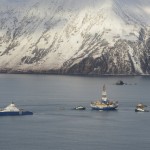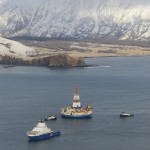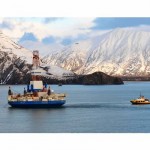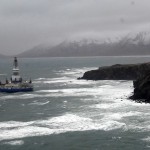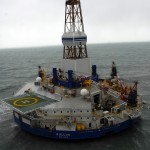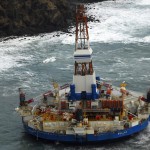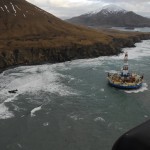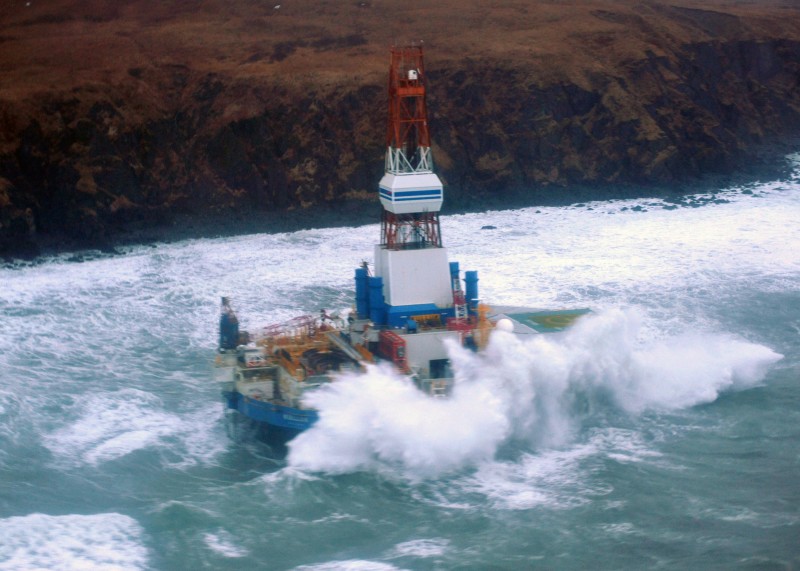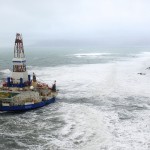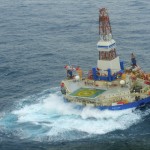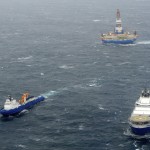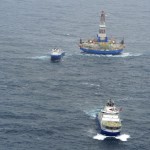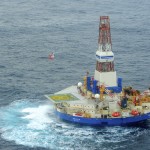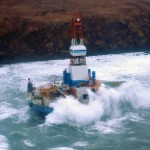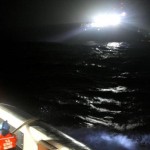Kulluk Refloated
News Release from Kulluk Response:
Unified Command has confirmed that the Kulluk, towed by the anchor handling vessel Aiviq, approached its safe harbor location in Kiliuda Bay at approximately 10 a.m., Alaska Time. The final location for assessment within the Bay will be determined by environmental conditions, including weather.
The Kulluk traveled 45 nautical miles since the start of the tow, roughly 12 hours ago. Average speed has been 3.5 knots or 4 mph.
The Kulluk was refloated from its Ocean Bay position, off Sitkalidak Island, late Jan. 6. It will remain connected to its support vessels while it undergoes assessment in Kiliuda Bay, located about 30 miles north of Ocean Bay.
The Coast Guard Cutter Alex Haley escorted the tow to Kiliuda Bay along with two oil spill response vessels and other support vessels. A 500-yard radius safety zone around the Kulluk followed the escort and remains in place in Kiliuda Bay.
Monitoring by the oil spill response vessels escorting the tow confirmed that there were no signs of a discharge of oil during the transit.
The combined fleet has 15,000 feet of boom should it be needed. Additional boom has been staged in various locations.
The Kulluk has been grounded since Dec. 31, after it broke tow during severe weather conditions.
Unified Command continues to coordinate with the Old Harbor Native Corporation to assist with any necessary cleanup activities. Additional spill response land resources have been staged in Old Harbor.
Yesterday afternoon, salvage teams successfully attached the main tow line to the Kulluk drilling unit.
The Salvage Master had the discretion to initiate the tow should favorable conditions occur throughout the night. At approximately 10:10 p.m., Jan. 6 the Kulluk was refloated.
Related articles
- Shell’s Grounded Arctic Drilling Rig Successfully Refloated – Bloomberg (bloomberg.com)
- Kulluk Dislodged and Underway for Kiliuda Bay (alaskapublic.org)
- Grounded Shell oil-drilling ship refloated (seattletimes.com)
